Introduction to Pressure Relief Devices - Part 1
When the pressure inside equipment such as boilers or pressure vessels increases beyond a specified value, the excess pressure may result in a catastrophic failure.
#pressure-relief #basics #automation
This is why pressure relief devices are known as the “last line of defense” for pressurized equipment. In large measure, accidents are caused when the pressure relief devices themselves fail to perform the function for which they are designed. Still, these essential devices are too-often ignored or not understood fully by the people in the industries they are designed to protect.
A START
In the United States, use of such devices was spurred by the 1,700 boiler explosions that resulted in 1,300 deaths from 1905 to 1911. By 1915, the American Society of Mechanical Engineers (ASME) published its first boiler code, Rules for Construction of Stationary Boilers and Allowable Working Pressures, incorporating rules for construction and installation of safety valves for boilers.
Since the introduction of that first ASME boiler code, many technological developments have occurred in the design and construction of pressure relief devices. Most jurisdictions in this country and Canada have adopted rules for pressure relief devices based on national codes and standards.
CODES AND STANDARDS
The eight certification designators under the ASME Boiler and Pressure Vessel Code Sections I through XII – 2015 Edition are:
V Safety valve for steam boilers
NV Safety valve for nuclear components
HV Safety relief valve for heating boilers
UV Safety relief valve for pressure vessels
UV3 Safety relief valve for pressure vessels with more than 10,000 psi maximum allowable working pressure
UD Rupture disk for pressure vessels
TV Safety valve for transport tanks
TD Rupture disk for transport tanks
The ASME Boiler and Pressure Code exempted pressure relief devices that have set pressures less than 15 psi. These are known as non-ASME pressure relief devices, and they may be designed by using codes and standards other than ASME.
The performance of pressure relief devices is determined by ASME Pressure Test Code (PTC) 25-2014 Pressure Relief Devices. In addition, this code has standard definitions for the types and parts of pressure relief devices.
The American Petroleum Institute (API) has also published codes and standards for sizing, selection, installation and inspection of pressure relief devices. For example, API RP 520, Part I-2014 is widely used for sizing and selection of pressure relief devices in petroleum industries.
TYPES OF DEVICES AND VALVES
A pressure relief device is actuated by inlet static pressure. It is designed to open during emergency or abnormal conditions to prevent a rise of internal fluid pressure over a specified value or set pressure.
The devices are used on all types of pressurized equipment from water heaters to power generation equipment, and even in spacecrafts. The purpose of these devices is to protect a vessel against overpressure, though they also may be designed to prevent excessive internal vacuum. What they do not protect against is structural failure when the vessel is exposed to abnormal conditions, such as high temperature from fire.
Many types of pressure relief devices are available in the market today. The main types of pressure relief devices are: reclosing and nonreclosing pressure relief devices.
Reclosing Pressure Relief Devices
The primary purpose of a pressure relief valve is to open to relieve excess pressure, reclose and prevent further flow of fluid after normal conditions have been restored (Figure 5). A secondary purpose is to minimize damage to other system components through operation of the pressure relief valve itself. A pressure relief valve designed under ASME Boiler and Pressure Vessel Code is stamped with the certification mark, and one of the certification designators: V, NV, HV, UV, UV3 or TV.
- They are reliable when properly sized and operated.
- They are versatile and can be used for many services.
- The disadvantages of pressure relief valves are:
- The relieving pressure is affected by the back pressure (pressure that exists at the outlet of a safety relief valve).
- They are subject to chatter if built-up back pressure is too high.
The many types of pressure relief valves that exist are based on different designs and construction. Generally, they’re classified as: safety relief valves, relief valves and safety valves.
A safety relief valve can be used for either a relief valve or a safety valve, depending on the application. Safety relief valves are classified as:
- Conventional safety relief valve
- Balanced bellows
- Pilot operated
- Power actuated
- Temperature and pressure actuated
- Conventional safety relief valves
A conventional safety relief valve is a spring-loaded pressure relief valve characterized by a rapid-opening pop action. Conventional safety relief valves are used for applications where excessive variable or built-up back pressure is not present in the system. The operational characteristics of these valves are directly affected by changes in the back pressure on the valve.
- An inlet nozzle connected to the vessel or system to be protected
- A movable disk that controls flow through the nozzle
- A spring that controls the position of the disk
The working principle of a conventional spring-loaded safety relief valve is based on the balance of force. The spring load is preset to equal the force the inlet fluid exerts on the closed disk when the system pressure is at the set pressure of the valve.
The disk remains seated on the nozzle in the closed position when the inlet pressure is below the set pressure. The valve opens when the inlet pressure exceeds set pressure, overcoming the spring force. The valve recloses when the inlet pressure is reduced to a level below the set pressure.
Once the valve has opened, an additional pressure buildup at C occurs. This additional force at C causes the disk to lift substantially at pop. The valve closes when the inlet pressure has dropped sufficiently below the set pressure. The pressure at which the valve resets is called the closing pressure. The difference between the set pressure and closing pressure is the blowdown.
In the design of a conventional valve, an important consideration is seat leakage. This leakage can result in continuous loss of system fluid and may cause progressive damage to the valve seating surface. Based on the seating material, conventional valves are classified as:
- Metal-seated valves. Metal-to-metal seats are commonly made from stainless or other hard alloy steels and are normally used for high-temperature applications such as steam and corrosive media applications for processing a wide variety of chemicals.
- Soft-seated valve. An alternative to metal is resilient disks that can be fixed to either or both the seating surfaces where tighter shut-off is required. They are common for gas or liquid applications. These inserts may be made from a number of different materials, but Vinton, nitrile or EPDM (ethylene propylene diene monomer) are the most common.
Balanced bellows safety relief
When back pressure is variable and exceeds 10% of the set pressure, a balanced bellows safety relief valve is recommended.
- The advantages of balanced bellows safety relief valves are:
- The relieving pressure is not affected by the back pressure.
- They can handle higher built-up back pressure.
- They protect springs from corrosion.
- They have good chemical and high-temperature capabilities.
Balanced bellows safety relief valves are classified into two categories:
- Balanced bellows. This valve is the same as a conventional safety relief valve design except that a bellows has been added.
- Balanced bellows with auxiliary balancing piston. With this valve, the balanced bellows seal the body and fluid stream from the bonnet and working parts. The auxiliary balancing piston assures proper valve performance by compensating for back pressure in case the bellows fail.
Pilot-operated safety relief valves
The primary difference between a pilot-operated safety relief valve and a spring-loaded pressure relief valve is that the pilot-operated valve uses process pressure to keep the valve closed instead of a spring. A pilot is used to sense process pressure and to pressurize or vent the dome pressure chamber, which controls the valve opening or closing.
A pilot-operated safety relief valve consists of the main valve, a floating, unbalanced piston assembly, and an external pilot. The pilot controls the pressure on the top side of the main valve’s unbalanced moving chamber. A resilient seat is normally attached to the lower end.
At below-set level, the pressure on opposite sides of the moving member is equal. When the set pressure is reached, the pilot opens and depressurizes the cavity on the top side so the unbalanced member moves upward, causing the main valve to relieve. When the process pressure decreases to a predetermined pressure, the pilot closes, the cavity above the piston is depressurized and the main valve closes.
Advantages of pilot-operated safety relief valves are:
- The valves’ set pressure is not affected by back pressure.
- The valves operate bubble tight at higher operating pressure-to-set pressure ratios, allowing operators to run very close to the vessel’s maximum allowable working pressure.
- There are reduced costs for the larger valve sizes.
- There is less susceptibility to chatter.
Pilot-operated safety relief valves are classified as follows:
Based on type of moving members
- A piston-type uses a piston for the unbalanced moving member.
- A diaphragm-type uses a flexible diaphragm to obtain a pressure seal for the dome volume instead of a piston and sliding piston seal.
Based on type of pilots
- A pop-action pilot causes the main valve to lift fully at set pressure without overpressure.
- A modulating-action pilot opens the main valve only enough to satisfy the required relieving capacity.
Based on flow of pilots
- A following-type pilot allows process fluid to flow continuously through the pilot when the pilot is open.
- A non-flowing-type pilot does not allow process fluid to flow continuously when the main valve is open.
Power-actuated safety relief valves
Valve movement to open or close is fully controlled by a source of power such as electricity, steam or water (hydraulic). The valve may discharge to the atmosphere or to a container that is at lower pressure. The discharge capacity can be affected by downstream conditions.
Power-actuated safety relief valves are used mostly for forced-flow steam generators with no fixed steam or waterline. They are also used in nuclear power plants.
T&P safety relief valves
A temperature and pressure-actuated safety relief valve (also called a T&P safety relief valve) is a pressure relief valve that may be actuated by temperature or pressure on the inlet side (Figure 10).
Such a valve is designed for dual purposes. First, the T&P valve prevents temperature within a vessel from rising above a specified limit (generally 210°F or 98°C). Second, the T&P valve prevents pressure in the vessel from rising above a specified value.
The valve incorporates two primary controlling elements, a spring and a thermal probe.
Generally, T&P safety relief valves are used for potable water heaters and heating systems.
Relief valves
A relief valve is actuated by inlet static pressure and a gradual lift that is generally proportional to the increase in pressure over opening pressure. Such a valve can be provided with enclosed spring housing suitable for closed discharge system applications.
Relief valves are commonly used in liquid systems, especially for lower capacities and thermal expansion applications. They also can be used on pump systems.
Relief valves are classified as follows:
- Adjustable relief valves feature convenient adjustment of the pressure setting through the outlet port. They are suitable for non-vented or vented inline applications in chemical, petrochemical and high-purity gas industries.
- Electronic relief valves (ERVs) are pilot-operated relief valves that offer zero leakage. The ERV package combines a zero-leakage isolation valve with electric controls to monitor and regulate system pressure. These valves provide protection either in a capacity-relieving function or simply in an overpressure-protection application.
Safety valves
Safety valves are typically used for boiler overpressure protection and other applications such as downstream from pressure-reducing controls. These valves are installed wherever the maximum allowable working pressure of boilers is likely to be exceeded. Safety valves are also used for compressible gases, in particular for steam and air.
Safety valves are classified according to the lift. The term “lift” refers to the amount of travel the valve undergoes as it moves from its closed position to the position required to produce the certified discharge capacity.
Safety valves may be classified as low lift, high lift, and full lift, which affects the discharge capacity of the valves.
- Low-lift are safety valves in which the valve lifts a distance of 1/24th of the bore diameter. Since the valve has a small lift, the capacity is much lower than other types.
- High-lift are safety valves in which the valve lifts a distance of at least 1/12th of the bore diameter. High-lift valves are used on compressible fluids, where their action is more proportional.
- Full-lift are safety valves for which the valve lifts a distance of at least 1/4th of the bore diameter. Full-lift valves are considered the best choice for general steam applications.
Pressure relief valve accessories
Pressure relief valves have a number of accessories vital to their operations including:
- Test gags are used to hold the safety valve closed while equipment is subjected to a hydrostatic test. To avoid damage to the spindle and/or seat, care is required so the gag screw is not tightened.
- Lifting mechanisms are used to open the pressure relief valves when the pressure under the valve disk is lower than the set pressure. These mechanisms are available in three basic types: plain lever, packaged lever and air-operated lifting devices.
- Bolted caps are available for standard pressure relief valves in addition to the screwed caps.
- Valve position indicators are microswitch apparatuses used for remote indication of the opening of a pressure relief valve.
CONCLUSION
Although the options for pressure relief are wide and varied, knowing which ones are right for which applications is critical to all end-user industries. This article provided readers background on the reclosing options, but it covers only half the picture. For background on the nonreclosing side of the equation, view Part 2 of this article.
Mohammad A. Malek, PhD, PE is pressure systems manager with Stanford University – SLAC. He is also an instructor with ASME. Dr. Malek is the author of the book Pressure Relief Devices published by McGraw-Hill. Reach him at malekm@asme.org.
RELATED CONTENT
-
Differences Between Double Block and Bleed and Double Isolation
There is an important distinction between DBB and DIB, as they often fall under the same category and are used interchangeably within the industry.
-
Understanding Torque for Quarter-Turn Valves
Valve manufacturers publish torques for their products so that actuation and mounting hardware can be properly selected.
-
Back to Basics: Globe Valves
There are many applications where the globe valve outshines other designs, so the future is still bright for these long-time favorites of the flow control industry.




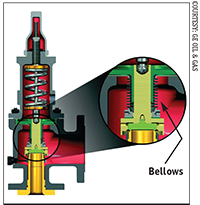

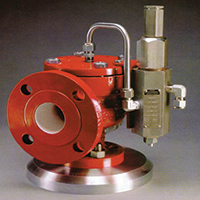
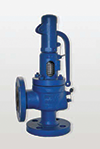
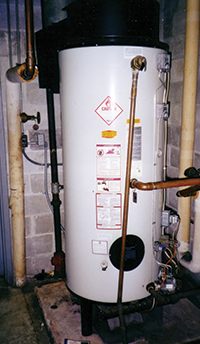
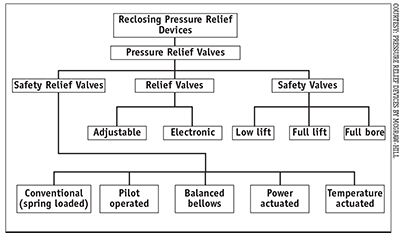
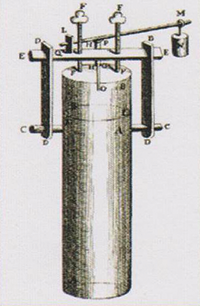

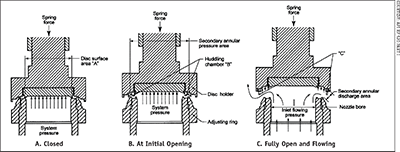







 Unloading large gate valve.jpg;maxWidth=214)